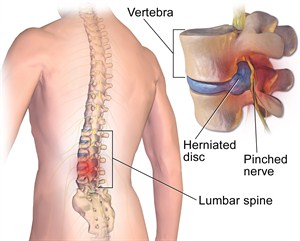

What is Spinal Stenosis?
Stenosis means narrowing of a passage. There are two types of stenosis in the spine:

Stenosis in the neck may cause symptoms in the arms while stenosis in the low back area may cause symptoms to radiate into the legs. Common symptoms of low back stenosis include leg pain, discomfort, or a sense of leg fatigue with prolonged standing and with walking. These symptoms tend to decrease rapidly with sitting.
Common Causes
Stenosis is usually a consequence of normal aging. Typically, a combination of bony and soft tissue (ligament and disc) changes produce the narrowing associated with stenosis. Some diseases, and in some cases trauma to the spine, may also cause stenosis.
Decreased bowel or bladder control may be the result of stenosis. Contact your physician if you experience these changes.
Examination and Diagnosis
Initially, history and physical examination by a musculoskeletal expert should be completed. Imaging tests may be taken such as X-rays or MRI may be recommended.
Treatment Options
Non-surgical options include non-steroidal medication or a steroidal medication taken orally or injected locally to involved area. Referral to a physical therapist may decrease symptoms and improve mobility and function.
Surgical options vary in the case of more advanced stenosis and discussion with a surgeon will identify the appropriate procedure. Discectomy (removal of disc material), laminotomy and foramenotmy (both involve removal of bone) as well as fusion of spinal bones are common procedures that reduce pressure on the nerves.
Learn more about spinal stenosis.
Copyright © www.orthopaedics.win Bone Health All Rights Reserved